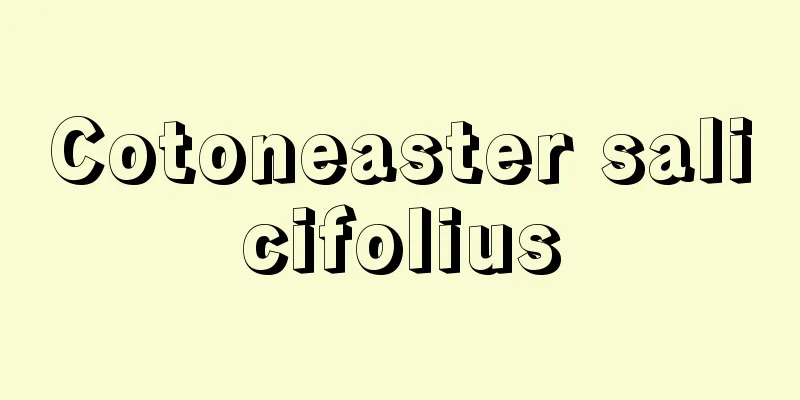Face

|
...In any case, the characters mochi (rice cake) have been used to represent steamed glutinous rice, put into a mortar, pounded with a pestle, and shaped into various shapes, but the use of the kanji mochi is unique to Japan and completely different from its usage in China. According to Osamu Shinoda (1899-1978), a customs scholar and food historian, in China, mochi (bing) is the general term for flour products such as mantou (buns) and qiaozi (dumplings), flour itself is called mien (noodles), flour products made from grains other than wheat (rice, foxtail millet, millet, beans, etc.) are called 'aru', and when the 'aru' is later broken down into small pieces and kneaded well and steamed as large pieces, it is called 'kao', when it is rolled into small balls and steamed, it is called 'yuan' (tomo), when a circle with bean paste inside is called 'tuan', and when rice is steamed as a whole grain and then pounded, it is called 'tsu'. In this way, the Chinese 餈 corresponds to the Japanese mochi, but in Japan the 餈 means shitogi. *Some of the terminology that mentions "nigiri" is listed below. Source | Heibonsha World Encyclopedia 2nd Edition | Information |
|
…いずれにせよ,もち米を蒸して臼に入れ,杵で搗(つ)いたうえで,いろいろの形につくったものを餅の字で表してきたのであるが,餅という漢字は日本独自の使い方であり,中国の用法とはまったく異なっている。風俗学者で食物史家の篠田統(おさむ)(1899‐1978)によると,中国では饅頭(マントウ),餃子(チアオズ)などの小麦粉製品の総称が餅(ピン)であり,小麦粉そのものが麵(ミエン),小麦以外の穀物(米,アワ,キビ,豆など)の粉製品を餌(アル)といい,餌がのちに細かく分かれ,よくこねて大きいままで蒸したものを餻(カオ),小さくまるめて蒸したものを円(ユワン)(とも),円の中に餡を入れたのを団(トワン),米を粒のまま蒸してから搗いたのが餈(ツー)であるという。すると中国の餈が日本の餅にあたるわけであるが,日本では餈は粢(しとぎ)のことである。… ※「餻」について言及している用語解説の一部を掲載しています。 出典|株式会社平凡社世界大百科事典 第2版について | 情報 |
>>: Flame hardening - Kaen yakiire
Recommend
Ikuu
...Abstaining from meat and grains and eating onl...
Light amber
〘 noun 〙 A type of silk fabric. A thin amber-weave...
International Gothic Style - International Gothic
A style of art that arose around 1360/70 to 1420, ...
Giant leafhopper (large horizontal crawler) - Giant leafhopper
A general term for insects belonging to the Hemipt...
Keta Shrine
Located in Jikemachi, Hakui City, Ishikawa Prefec...
Oguni Washi
Washi paper produced in Oguni-cho, Nagaoka City, N...
negative rite
…When people meet, there is usually some ritual e...
Call quality - tsuuwahinshitsu (English) speech quality
A term used to quantitatively express how clearly ...
Liquefaction of coal
The process of producing petroleum-like liquid fu...
Wanganui [River] - Wanganui
...Population: 41,000 (1991). Located at the mout...
Aga Khan [III] (English spelling) Āghā Khān III
1877‐1957 He was the leader of the Khoja sect with...
Bezeklik Caves - Bezeklik Caves
The ruins of a Buddhist cave temple carved into a ...
Gamla Uppsala - Gamla Uppsala
…After the 5th century, they were common in Swede...
Nguyen Hoang - Nguyen Hoan
…Also written as the Cantonese Dynasty. In 1558, ...
Toxicant from waste minerals
Toxic substances contained in wastewater and flue ...









